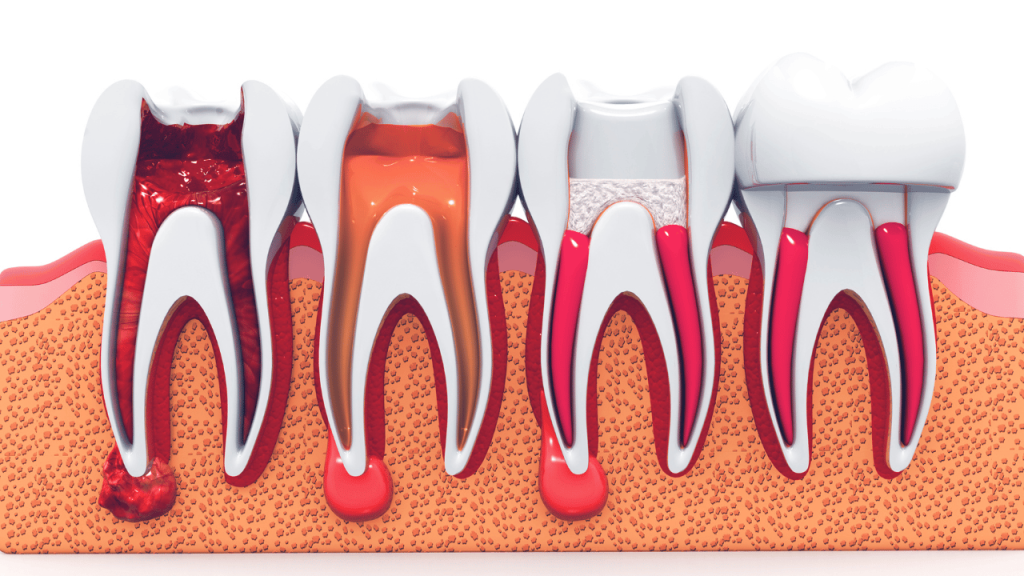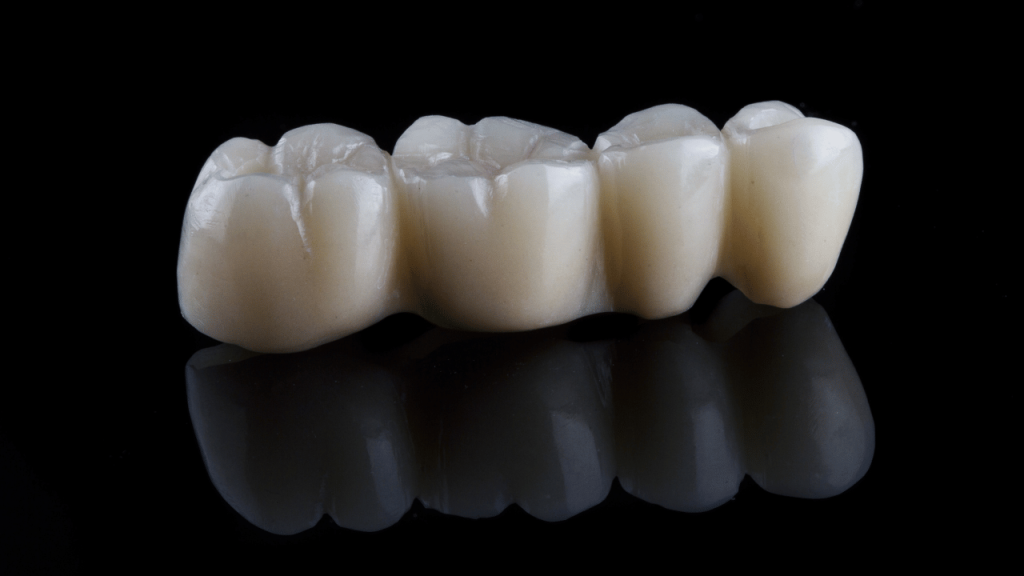
Are you wondering how long a root canal procedure will take after receiving a recommendation from your dentist? This dental procedure is standard and can prevent the need to extract a damaged or infected tooth. With over a decade of experience as a dentist, I can confirm that the duration of a root canal treatment can vary based on factors such as the tooth’s location, the extent of the damage or infection, and whether the tooth has undergone previous treatment.
Despite its reputation as a painful and lengthy procedure, a root canal can often be completed in just one or two appointments. The first appointment typically involves preparing the tooth and removing the damaged or infected pulp. Depending on the case’s complexity, this step can take anywhere from 30 minutes to 2 hours. If necessary, the second appointment involves filling and sealing the root canal and may take 30 minutes to 2 hours. However, remember that every case is unique, and your dentist or endodontist [1] will be able to provide a more accurate estimate of the length of your procedure.
Key Takeaways
- Depending on the case’s complexity, a root canal can often be completed in just one or two appointments.
- The duration of a root canal treatment may differ based on various factors, such as the tooth’s position, the severity of the damage or infection, and whether the tooth has undergone prior treatment.
- Your dentist or endodontist will be able to provide a more accurate estimate of the length of your procedure.
Preparing for Root Canal Procedure
If your dentist has recommended a root canal treatment, you might feel a bit nervous about the procedure. However, with the right preparation, you can significantly reduce stress levels and make the experience more comfortable. Here are some things to keep in mind when preparing for root canal treatment.
Initial Consultation
Before your root canal treatment, your dentist will examine your tooth and take X-rays to determine if a root canal is necessary.
Diagnostic Tests
Your dentist may perform diagnostic tests to determine the health of your tooth’s nerve and surrounding tissues, including temperature, percussion [2], and electric pulp testing [3]. These results will help determine the best course of treatment.
Local Anesthesia
The dentist will administer local anesthesia to numb the area surrounding the affected tooth during the root canal procedure. This will minimize any pain or discomfort experienced during the treatment.
Discussing the Number of Visits and Overall Time Frame
Your dentist will also discuss the number of visits required for the root canal treatment and the overall time frame. In most cases, a root canal can be completed in one or two visits, depending on the extent of the damage.
Removing the Pulp
Once the tooth is numb, the dentist will use a dental drill and root canal files to create an opening and remove the pulp. An irrigating solution is then used to disinfect the tooth and remove debris and bacteria.
The pulp must be completely removed to prevent further infection. Any remaining pulp can spread infection. After removal, the space is filled with gutta-percha to seal the tooth and prevent bacteria from entering.
The dentist will use local anesthesia for comfort and a dental dam to isolate the tooth.
Cleaning and Filling the Root Canal
After removing the infected pulp, the next step is to clean and fill the root canal to prevent further infection.
During a root canal, the dentist uses special tools to remove infected tissue from the canal and flush out bacteria and debris using sodium hypochlorite. The duration depends on the complexity of the canal system.
After cleaning the canal, it is sealed with a biocompatible material and a sealer paste. A filling is then placed to close the hole. Medication may be used to fight the remaining infection.
The cleaning and filling process can take up to 90 minutes and may require multiple appointments. However, ensuring the tooth is fully restored and free from infection is essential.
Sealing and Fixing the Tooth
Once the root canal procedure is complete, the dentist will seal and fix the tooth to prevent future infection by placing a temporary or permanent filling, depending on the patient’s condition. If multiple appointments are required, a temporary filling may be placed to protect the tooth between appointments, which is later removed before the permanent filling is placed.
After filling a tooth, the dentist applies a sealant to make it airtight and prevent future infection. The sealant is a liquid that hardens with a special light, creating a barrier against bacteria.
Proper oral hygiene is crucial after a root canal procedure. Brushing and flossing regularly are recommended to keep the tooth clean and healthy. Attending regular dental checkups is also essential to ensure the tooth is not infected.
Adding a Crown

After a root canal, a dental crown [4] is placed over the tooth to provide support and protection.
Importance of a Crown
A crown is necessary because it provides structural support and protection, restores the tooth’s function, and improves its appearance.
Crown Fitting Process
The installation of a crown typically requires two visits to your dentist. At the initial appointment, your dentist will begin by cleaning out any remaining decay and shaping the tooth to accommodate the crown. Following this, they will make a mold of the tooth, which will be forwarded to a dental laboratory for the production of the permanent crown. Meanwhile, you will be provided with a temporary crown to use.
During the second appointment, the permanent crown will be placed by your dentist, replacing the temporary crown. They will verify the fit of the crown and make any needed adjustments. Upon confirming the proper fit, your dentist will cement the crown onto the tooth, finalizing the root canal process.
Frequently Asked Questions
What is the typical recovery time after undergoing a root canal?
After a root canal procedure, it is common to experience some discomfort and sensitivity for a few days. However, most people are able to return to their normal activities the following day. The recovery time depends on the severity of the infection, the number of teeth treated, and the individual’s overall health. Rest assured, a root canal is a highly effective procedure that can save your tooth and alleviate your pain.
How much time does a root canal procedure take for a molar tooth?
The duration of a root canal treatment for a molar tooth can vary depending on the case’s complexity. Root canal for a molar tooth may take anywhere from 90 minutes to 3 hours. However, the average time for a root canal procedure is 1 to 2 hours.
What’s the duration of a root canal treatment when it involves placing a crown?
If a root canal treatment involves placing a crown, the procedure will be more extended. Root canal procedure can take between 30 and 60 minutes if the tooth has one canal. However, it would help if you were prepared to spend about 90 minutes in the dentist’s chair for a root canal that involves placing a crown.
Can you describe the root canal process from beginning to end?
During a root canal procedure, the dentist first numbs the area around the affected tooth. Then, they create an opening in the top of the tooth to access the pulp chamber. The infected or damaged pulp is removed from the tooth, and the root canals are cleaned and shaped. Finally, the tooth is filled with a special material and sealed with a filling or crown. The entire process typically takes about 1 to 2 hours.
How long does a root canal procedure usually last?
The duration of a root canal procedure varies depending on the case’s complexity. Most root canal treatments can be completed in one or two appointments. The average time for a root canal procedure is 1 to 2 hours.
Is it possible to drive immediately following a root canal treatment?
After a root canal treatment, it is generally safe to drive home. However, you may experience some numbness in your mouth, and it is essential to wait until the numbness wears off before driving. If you feel drowsy or lightheaded after the procedure, having someone else drive you home is best.

